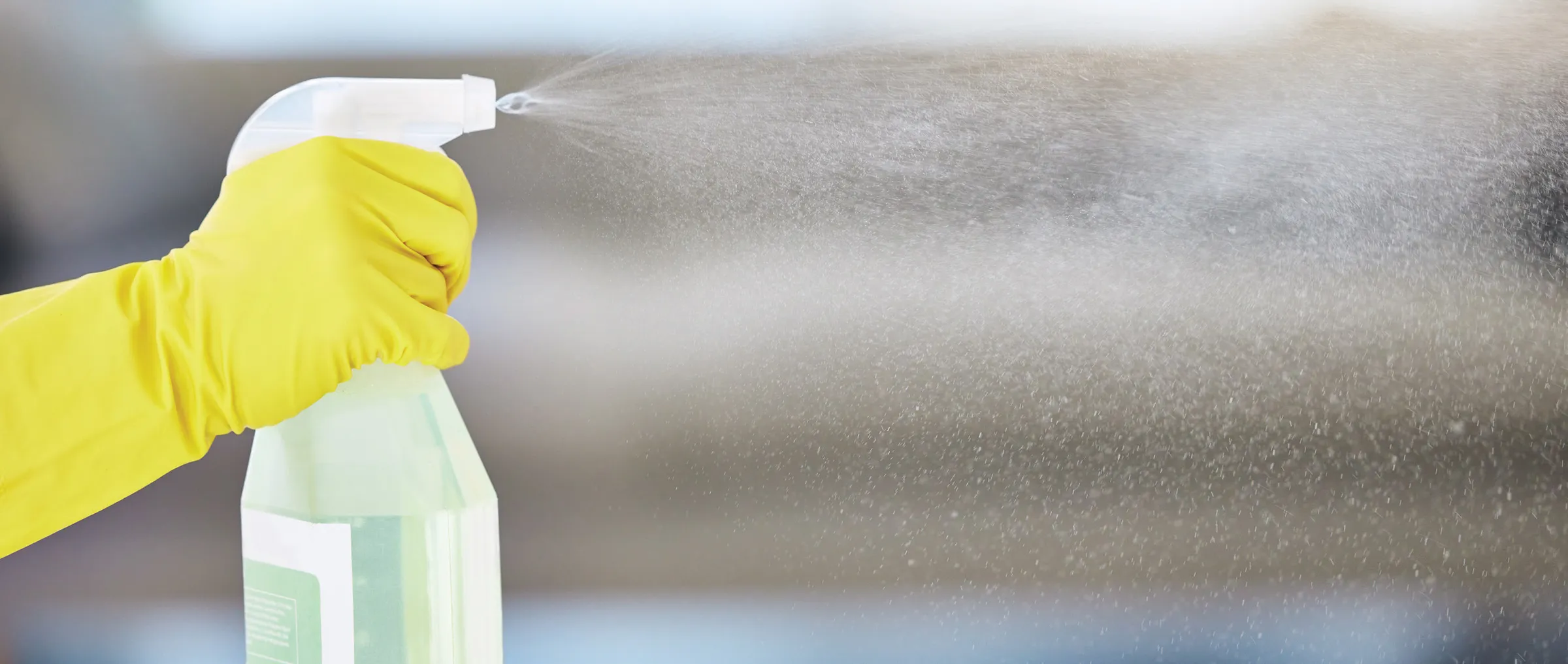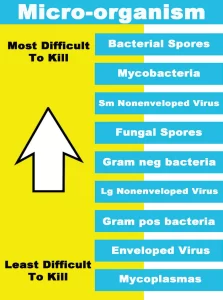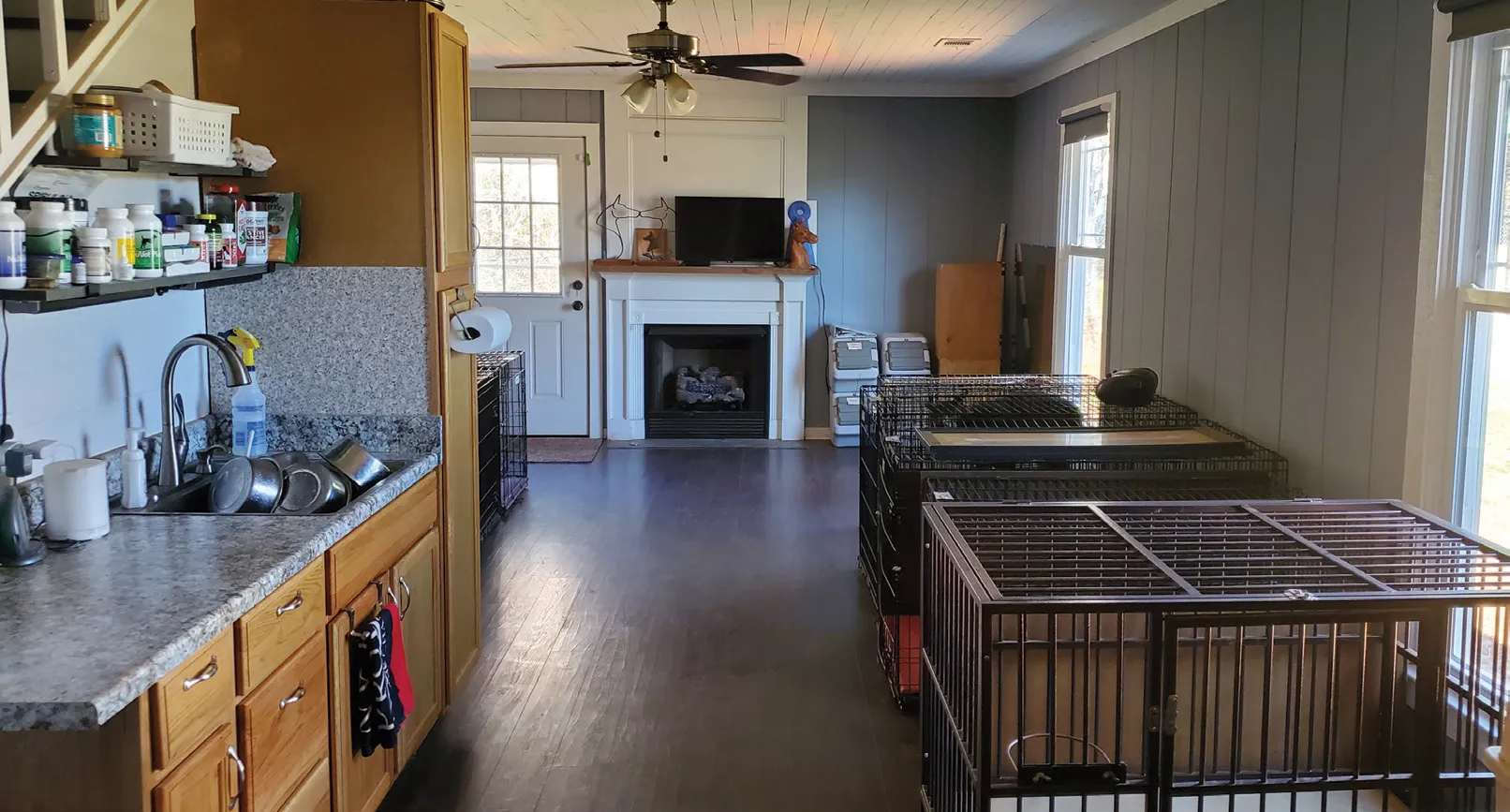Existentially Elizabeth: Spring 2024
Posted on May 10, 2024

Beyond Clean: What’s In Your Disinfectants?

Quaternary Ammonium Compounds, also known as QACs or Quats, were developed in the 1970’s and have been a part of our everyday world ever since, but particularly so with the advent of COVID. Although QACs are utilized for a multitude of uses, for the purpose on this article we’ll focus on QACs as a component of disinfectants. QACs are used widely in veterinary clinics to clean hard surfaces like floors, cages, kennels, exam tables and counter tops. They are used because of they are generally fungicidal, bactericidal, and virucidal for some viruses. Additionally, QACs have a decent shelf life and are inexpensive. Disinfectants containing QACs are also frequently used in boarding facilities, grooming shops, and in the homes of conscientious dog enthusiasts like yourself.
Disinfecting products containing Quats include Top Performance 256 Disinfectant & Deodorizer, Oster Spray Disinfectant, KennelSol, ProVet Logic Animal Facility Disinfectant, Virex, MediClean, and many Lysol and Zep formulas. Some Quat products even have names which make one think of nature inspired formulas like Zep DZ-7 Neutral Disinfectant Cleaner, Bright Solutions Lemon Zip, or Tropical Envirusol Disinfectant sold at PetEdge. You can recognize Quat products by looking for their chemical names under the products’ Active Ingredient list. Most common is Benzalkonium Chloride or anything ending in Ammonium Compound or Ammonium Chloride. If in doubt, simply do an internet search asking, “Is (insert chemical name) a quaternary ammonium compound?”

But why look out for QAC disinfectants? Studies over the last few years have questioned the safety of QACs to humans, animals and the environment; and to their contribution to the development of ‘super bugs’- that is bacteria resistant to antibiotics.
Typically purchased in money saving concentrate form, QACs must be carefully diluted (making sure to wear appropriate gloves and eye protection) to obtain the delicate balance between effectiveness and safety. Diluting QACs too much results in sub-lethal concentrations. Prolonged or repeated exposure to these sub-lethal concentrations can push bacteria to develop resistance not only to QACs, but also cross-resistance to antibiotics. The same can occur if the proper dilution is achieved, but the product is not allowed the appropriate 10-20 minute contact time (the length of time the surface must remain wet with the product for it to have maximum kill effect).
Conversely, inadequate dilution can result in serious skin and eye irritation, asthma and other breathing problems. Last year a case series summary was published in the Journal of Veterinary Emergency and Critical Care discussing the deaths of two dogs in kennel settings following accidental exposure to two different QAC disinfectants in unrelated events. The timing for the onset of symptoms was not noted, likely because the dogs were kenneled. But when brought in for treatment approximately 24 hours post-exposure, the dogs exhibited significant lethargy, hyper-salivation, vomiting, skin lesions, respiratory distress, bloody nasal discharge, swelling and ulceration of the tongue, and pain (likely due to ulceration, delayed gastric emptying, and regurgitation).
Despite treatment, both dogs continued to worsen and were euthanized. Necropsies found erosion and ulceration of the lips, tongue and GI tract, while microscopic evaluation was consistent with necrosis of the skin and GI tract. It was assumed that both dogs were exposed by direct skin contact and the likely ingestion of concentrated QAC liquid. Not surprisingly, one veterinarian’s comment in an article about this case series summary in Clinician’s Brief stated, “I became very ill in 1998 from the disinfectants. Because this was a new phenomenon, very few people believed me. I had to quit practice and it took a long time to recover. I still have to stay away from the disinfectants. So, it is not just a dog problem.”
Indeed not. In animal and cell experiments, scientists have found links between QACs and decreased sperm quality, reduced fertility, birth defects and developmental problems, as well as disruption of other cellular processes.
With the proper safety precautions, and when used at labeled dilution and for the entire recommended contact time, QACs can be part of an effective strategy to control and prevent the spread of many germs. However, with the risks mentioned above, it is worth considering more user-friendly options.
Accelerated Hydrogen Peroxide (AHP) was first released in 1998 as a cleaning disinfectant with enhanced stability for commercial use (AHP is NOT the same as household or Food Grade Hydrogen Peroxide). It is odorless, non-irritating to skin or eyes, does not require personal protection like gloves and eye wear, and has a short, one-to-five-minute contact time. In its concentrated or ready-to-use form, AHP has a shelf life of 2-3 years, while diluted solution is 1-3 months. As it is biodegradable into water and oxygen, it is safe for the environment. It is so safe and effective that it is used in the enclosed environment of the International Space Station. In trials, AHP outperformed in kill performance and contact time, not only QACs but also Chlorhexidine against bacteria, enveloped and non-enveloped viruses, and fungi.
Examples of AHP products that are readily available online or at some brick-and-mortar stores include: Rescue Disinfectant, Oxivir formulas and Alpha-HP Multi-Surface Disinfectant Cleaner.
Regardless of what product you decide to use in your home or kennel, do so as directed on the label for safe and maximum effectiveness!

Quaternary Ammonium Compounds: A Chemical Class of Emerging Concern. Environ. Sci. Technol. 2023, 57, 20, 7645– 7665. Publication Date: May 8, 2023. https://doi.org/10.1021/acs. est.2c08244
Wipond M, Prittie J, Mastrocco A, Donovan TA. Fatal exposure to quaternary ammonium disinfectant in 2 dogs. J Vet Emerg Crit Care (San Antonio). 2023;33(3):380-387. doi:10.1111/vec.13299

